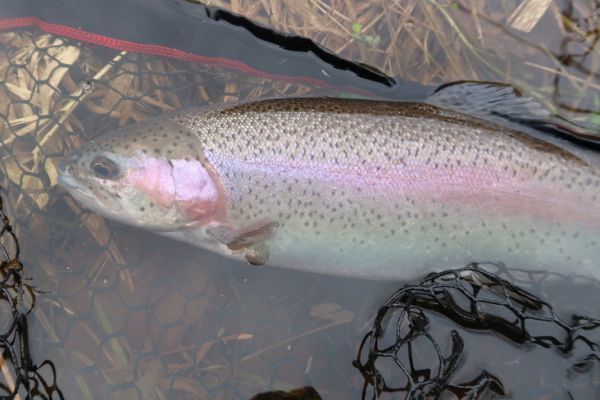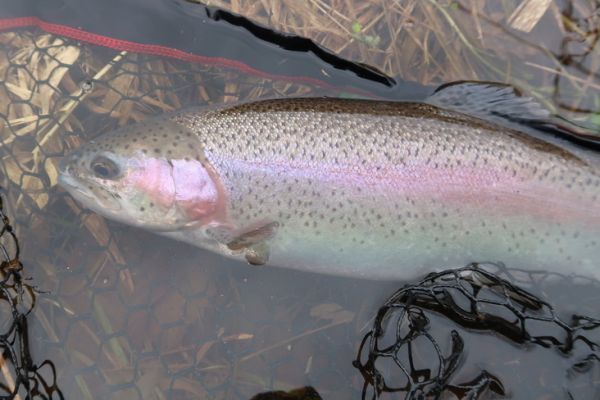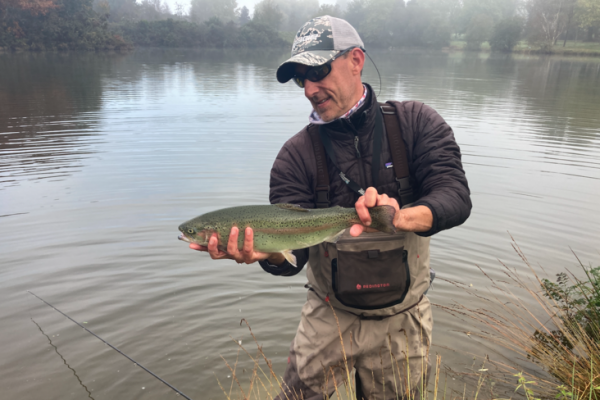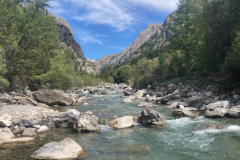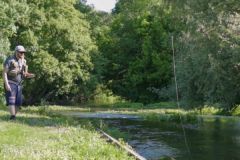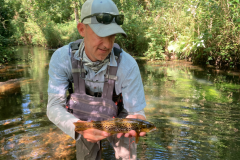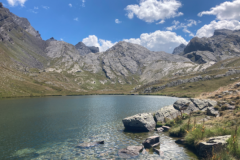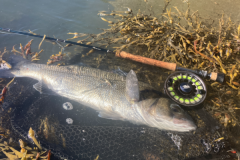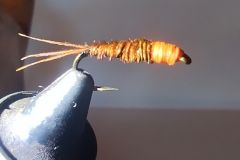When to fish for "chiros" between two waters?
Chironomids are an important part of the diet of trout in reservoirs. Over 5,000 species have been identified, including the best-known, the bloodworm. They exist in a variety of forms, since the larvae live at the bottom of lakes, but also in grass beds and aquatic plants.
Their life cycle is made up of a larval phase in which the larva lies in the substrate or on a support, then when the larva is ready to transform, it swims to the surface to hatch.
During this phase, larvae and pupae are very vulnerable, and trout are well aware of this, taking advantage of the opportunity to feed regularly throughout the season.
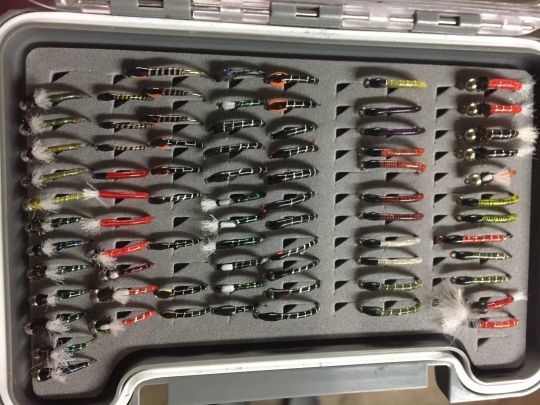
How chiro fishing works between two waters
The absence of chironomid adult hatchlings on the surface or in flight does not mean that chiros are not present or swimming in the water column.
As trout are regular consumers, chiro fishing should always be attempted at some time during the day, especially in the warmest hours of winter.
If a few gobbles and swirls can be observed, a chiro hatch may be taking place. If there is a lot of gobbling, you should fish on the surface and close to the hatch.
But if not, you can fish with a chiro between two waters to tempt the trout that intercept the swimming larvae.
In this case, a train of 2 or 3 flies should be used, allowing you to fish with different imitations representing different stages, colors and sizes of flies.
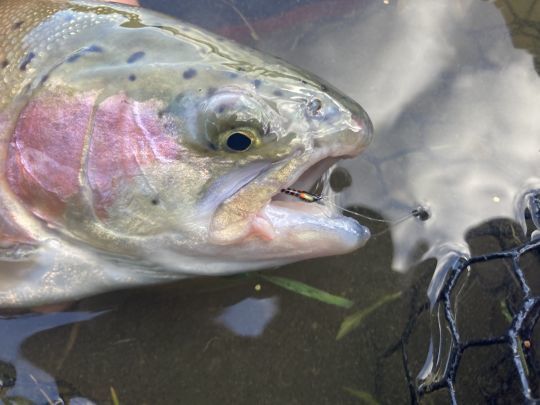
What rigs should you use to fish for chiros between two waters?
Initially, we can try fishing with a slow intermediate or midge-tip line that will present our flies between 10 cm and 50 cm below the surface.
If bites are slow because the trout are in a lower layer of water, a fast intermediate line will be more suitable.
It is also possible to fish chiro with an S3 sinker line for deeper fishing, particularly in lakes deeper than 3 metres.
Slow or fast intermediate silk mounting
You can set up a train of 3 flies with two unweighted chiros larvae at two different depths, spaced 1 m to 1.5 m apart, and a chironomid larva with a bead to fish a little deeper and stretch the leader. The clearer the water, the more you'll need to spread your flies and fish finely (keeping a tip of a certain diameter so as not to break too often).
But it is of course possible to vary the ballast or models (color, size, stage) to find what trout like.
You can also replace one of the unweighted chiro larvae with a "diawl bach", or a "cormorant", both of which represent a larva and may be of more interest to trout on certain days. Use two weighted nymphs and one unweighted nymph. The combinations are numerous.
It's important to test several colors, bearing in mind that chiros are often gray, black, red or olive. Their size can also be important (usually 12 to 16).
The leader can be between 4.5 metres and more, depending on the color of the water and the wary nature of the fish.
I often use a 1.5 m strand between the line and the first fly and then 1.5 m between the second fly and the tippet.
When fishing, the idea is to cast into the area of interest or thought to be sheltered by trout and fan out to cover "ground".
You can also wait more or less time for the flies to descend into the water (counting the immersion time is a good way of finding out where the trout are posted). A fast intermediate line can descend into more than 2 meters of water.
Watch out for downhill touches, which can sometimes happen.
The animation should be varied, and the angler can knit slowly or quickly, or with small accelerations, or bring in these flies in small continuous pulls or alternating pauses (short or long). You need to vary the animations regularly to understand what works. If you catch one or more fish, try to remember the immersion time, the animation used and the pattern that worked.
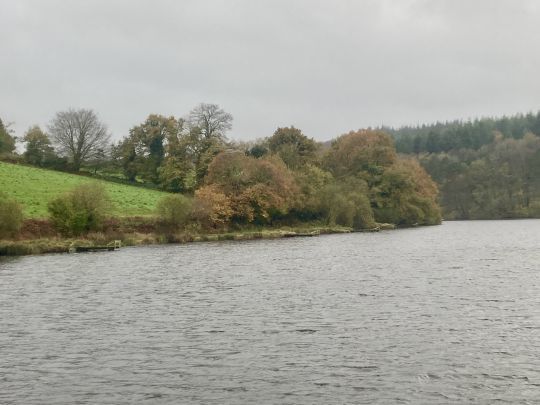
Floating silk or hoover silk or midge-tip silk mounting
You can set up a train of 3 flies with a surface fly that will float for a while and may go below the surface at some point, which is no problem. Followed by an unweighted chironomid larva that will move between 10 and 50 cm below the surface, and a chironomid larva tipped with a bead to fish a little deeper. But you can vary the ballast or the models (color, size, stage) as much as you like.
In fishing action, the idea is to cast into the interesting zone and let your fly train work in the wind and ripples, which are ideal situations for this type of fishing. You'll just have to retrieve the line that the wind/current brings back to keep the tension and detect even the shyest bites. Bites are often violent, so be careful not to be too tense. A belly in the silk helps avoid this. If you don't have bites, animations can also be added.
In the absence of wind, the angler can knit or reel these flies in small continuous pulls or alternating with pauses. It's important to vary the animations regularly to see what appeals.
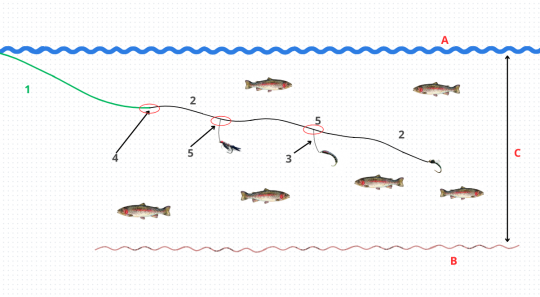
Captions:
1- Slow or fast intermediate silk
2- 14° to 18° line corps
3- Stem
4- Silk/towel knot
5- Surgical knot
A- Water surface
B- Background
C- Depth

 /
/ 